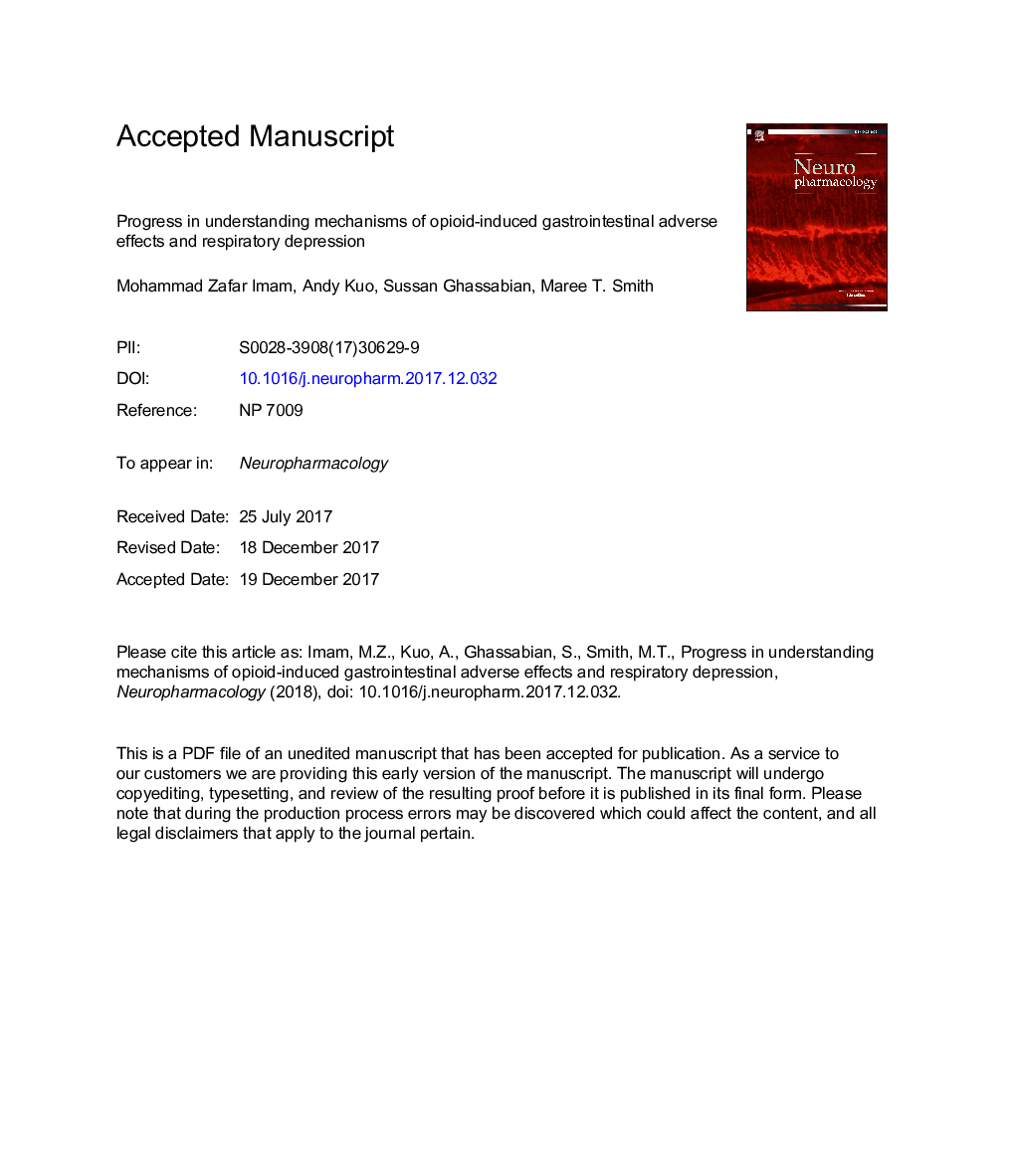| Article ID | Journal | Published Year | Pages | File Type |
|---|---|---|---|---|
| 8517148 | Neuropharmacology | 2018 | 60 Pages |
Abstract
Opioids evoke analgesia through activation of opioid receptors (predominantly the μ opioid receptor) in the central nervous system. Opioid receptors are abundant in multiple regions of the central nervous system and the peripheral nervous system including enteric neurons. Opioid-related adverse effects such as constipation, nausea, and vomiting pose challenges for compliance and continuation of the therapy for chronic pain management. In the post-operative setting opioid-induced depression of respiration can be fatal. These critical limitations warrant a better understanding of their underpinning cellular and molecular mechanisms to inform the design of novel opioid analgesic molecules that are devoid of these unwanted side-effects. Research efforts on opioid receptor signalling in the past decade suggest that differential signalling pathways and downstream molecules preferentially mediate distinct pharmacological effects. Additionally, interaction among opioid receptors and, between opioid receptor and non-opioid receptors to form signalling complexes shows that opioid-induced receptor signalling is potentially more complicated than previously thought. This complexity provides an opportunity to identify and probe relationships between selective signalling pathway specificity and in vivo production of opioid-related adverse effects. In this review, we focus on current knowledge of the mechanisms thought to transduce opioid-induced gastrointestinal adverse effects (constipation, nausea, vomiting) and respiratory depression.
Keywords
5-HTTRPV1JnkSMCICCERKGITPP2AVIPNOS5-hydroxytryptaminePOMCDOPmAChRpKaCB1NMDAN-methyl-d-aspartateMOPNAccDRNPLCNTSPKCGIRKGRPNK1pro-opiomelanocortinMRNMRRTLR4GRKG-protein receptor kinasemu-opioidCCR5OICHMnCTZNOPPreBötzinger complexAPJNucleus tractus solitariesOPRRGS4Opioid-induced respiratory depressionChemoreceptor trigger zonePLD2VPAC[d-Ala2Vestibular apparatusβ-Arrestin2β-arrestin1[d-Pen2c-Jun N-terminal kinasecAMPMAPKCyclic adenosine monophosphateadenylyl cyclaseAChAdverse effectsVomitingAcetylcholineMyenteric plexussubmucosal plexusOpioidsAnalgesiaNauseaKOPDADLEGastrointestinal tractdopamine 2 receptorRespiratory depressionSmooth muscle cellinterstitial cells of Cajalphospholipase CPhospholipase D2Mechanismsknock-outneurokinin wild-typeNitric oxidenitric oxide synthaseNucleus accumbensmedian raphe nucleusdorsal raphe nucleusHypoglossal motor nucleustransient receptor potential vanilloid type 1protein phosphatase 2Aprotein kinase AProtein kinase Cmitogen-activated protein kinasevasoactive intestinal peptidepreBötCkappa-opioidextracellular signal-regulated kinaseapelin receptormuscarinic acetylcholine receptorToll-like receptor 4Opioid receptorChemokine Receptor 5gastrin-releasing peptide receptorCannabinoid receptor 1ConstipationOpioid-induced constipation
Related Topics
Life Sciences
Neuroscience
Behavioral Neuroscience
Authors
Mohammad Zafar Imam, Andy Kuo, Sussan Ghassabian, Maree T. Smith,
